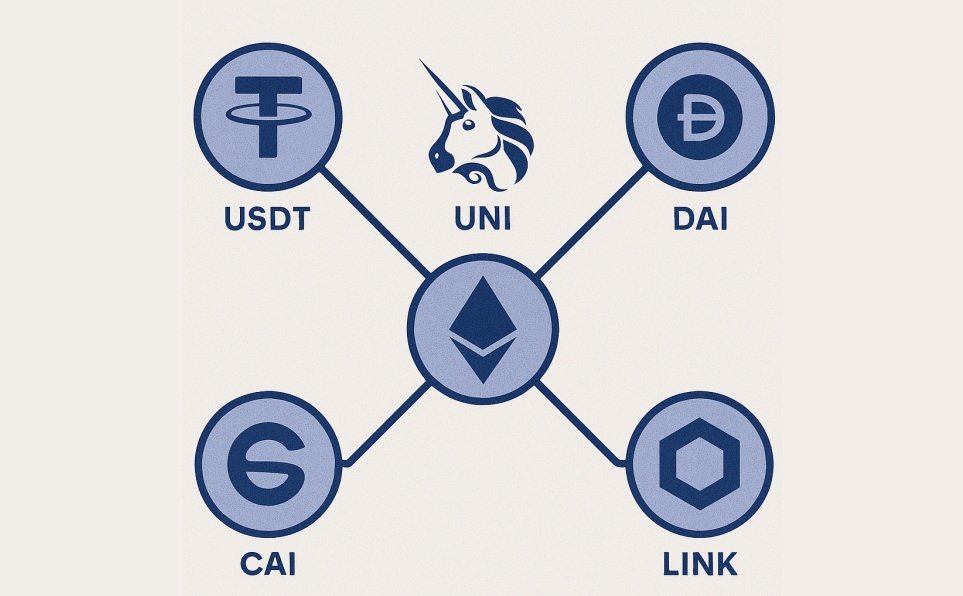
Introduction
In the fast-moving world of cryptocurrency, Ethereum has emerged as a revolutionary platform that changed what blockchains can do. Unlike Bitcoin, which primarily serves as a decentralized digital currency, Ethereum introduced a powerful idea—programmable smart contracts.
At the heart of Ethereum’s vast ecosystem lies a token standard that fuels countless projects: the ERC-20 token. From DeFi apps to stablecoins, these tokens are everywhere.
But what is Ethereum really? And what makes ERC-20 tokens so important? Let’s dive in.
What Is Ethereum?
Ethereum is a decentralized blockchain platform created in 2015 by Vitalik Buterin. Its key innovation was enabling developers to write smart contracts—self-executing pieces of code that run on the blockchain.
Key Features of Ethereum
- Smart Contracts – Automate transactions and logic without intermediaries
- Ethereum Virtual Machine (EVM) – A global computing environment
- Ether (ETH) – The native cryptocurrency used to pay for transactions and gas fees
- Decentralized Applications (dApps) – Apps that run on Ethereum instead of centralized servers
Ethereum’s Real-World Use Cases
- DeFi (Decentralized Finance)
- NFTs (Non-Fungible Tokens)
- DAO (Decentralized Autonomous Organizations)
- Gaming and Metaverse projects
- Supply chain and identity solutions
What Is an ERC-20 Token?
ERC-20 stands for Ethereum Request for Comment 20, a technical standard that defines how fungible tokens should behave on the Ethereum blockchain.
Think of it as a blueprint. If a token follows the ERC-20 standard, it can work seamlessly with wallets, exchanges, and DeFi protocols without needing custom integrations.
Why ERC-20 Tokens Matter
- Interoperability – All ERC-20 tokens follow the same rules, making them easy to integrate
- Widespread Adoption – Thousands of tokens are based on this standard
- DeFi and Stablecoins – Many top DeFi and stablecoin projects use ERC-20 (e.g., USDT, USDC, DAI)
How Do ERC-20 Tokens Work?
An ERC-20 token is a smart contract deployed on Ethereum. It includes a set of functions and rules like:
totalSupply()– Total number of tokensbalanceOf(address)– Token balance of a wallettransfer(address, amount)– Send tokensapprove()andtransferFrom()– For delegated transfers
Example Use Cases
| Token | Use Case |
|---|---|
| USDT | Stablecoin pegged to USD |
| UNI | Governance token for Uniswap |
| LINK | Oracle service via Chainlink |
| MATIC | Layer-2 scaling for Ethereum |
| AAVE | Lending and borrowing platform |
Benefits of ERC-20 Tokens
- Standardization – Ensures compatibility with dApps and wallets
- Programmability – Tokens can include custom logic (staking, vesting, burning)
- Liquidity – Easy to list on DEXs like Uniswap and centralized exchanges
- Security – Auditable, open-source smart contracts
- Global Reach – Anyone can create and use ERC-20 tokens
Challenges and Limitations
While ERC-20 is powerful, it isn’t perfect:
- High Gas Fees – During network congestion, transaction costs rise
- Scalability Issues – Limited throughput on Ethereum L1
- Bugs in Smart Contracts – Poorly written code can lead to exploits
- Impersonation & Scams – Anyone can launch a token with a misleading name
ERC-20 vs. Other Ethereum Standards
| Standard | Purpose | Example |
|---|---|---|
| ERC-20 | Fungible tokens | USDT, DAI |
| ERC-721 | Non-fungible tokens (NFTs) | CryptoKitties |
| ERC-1155 | Multi-token standard (NFT + FT) | Game items |
| ERC-4626 | Tokenized vaults for DeFi | Yearn Vaults |
How to Create Your Own ERC-20 Token
With basic knowledge of Solidity (Ethereum’s programming language), you can create and deploy your own token. Here’s a high-level process:
- Write the Smart Contract – Define name, symbol, supply, decimals
- Compile and Test – Use Remix, Hardhat, or Truffle
- Deploy to Ethereum – Using MetaMask and ETH for gas
- Verify and Interact – Add it to wallets and test transactions
Note: Use a testnet (like Sepolia or Goerli) before deploying on mainnet.
Future of ERC-20 in the Ethereum Ecosystem
Even as Ethereum upgrades to Ethereum 2.0 and Layer-2 scaling solutions become mainstream (Arbitrum, Optimism, zkSync), ERC-20 remains relevant. New standards might emerge, but ERC-20 will likely coexist and evolve, given its vast adoption.
With the rise of cross-chain bridges, many ERC-20 tokens are now available on other networks like BNB Chain, Polygon, Avalanche, and Base.
Suggestions
- What is Web3 and Why Does It Matter?
- Top 10 Privacy-Focused Cryptocurrencies in 2025
- Web3 & dApps: The Next Generation of the Internet
- NFTs & Metaverse: Redefining Ownership and Reality in the Crypto World
- What is Blockchain?
- BAT (Basic Attention Token): Revolutionizing Digital Advertising and User Attention
- What is Web3 and Why Does It Matter?
Conclusion
Ethereum and ERC-20 tokens are the foundation of the decentralized internet. From enabling DeFi and NFTs to powering new token economies, this pairing has reshaped the crypto world.
Whether you’re an investor, developer, or enthusiast, understanding ERC-20 tokens is key to navigating Ethereum’s ever-expanding universe.






